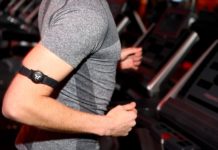Form is the most often violated when a person works out. In efforts of lifting more weights, doing more repetitions of workout longer good form is always circumvented and the result is current or future injury.
Elbows, knees, shoulders, joints, ligaments, and tendons fall victim to the incorrect procedures of workouts. So here are two of the seven components that you should follow to avoid or minimize damage during your workouts.

- FORM: The dictating factor as to whether one will achieve prolonged success or future failure.
Correct Form:
- Perform the exercise only when you can concentrate solely on the muscle in question.
- Never compete with others on lifting or repetitions unless you are a professional athlete competing for money or fame and are being paid to sacrifice your body.
- Always keep your knees slightly bent to release pressure from your lower back.
- Grip the weights in the correct manner to release pressure from your joints, tendons, and ligaments.
- Watch your “set” and relax all muscles except the one you are using at that time.
- Shift your attention away from the number of repetitions to a pre-set time for each exercise that you can handle without compromising your form.
- Keep your legs and back from helping to complete repetitions.
- Stop before you cheat.
- Stop the exercise when you are too tired to continue.
- BREATHING: The element needed for all growth and life sustaining activities.

- In deeply through the nose, out through the mouth.
- In deeply through the nose, out through the nose.
- Deep breathing matching the repetition effort.
- Breathe in before you exert and breathe out as you carry through the repetition.
- Avoid short spastic breathing.
- Avoid breathing faster than the repetition you are performing.
- Avoid “broken” or irregular breathing.
- Avoid “panic breathing”.
Stop the exercise when you are too tired to continue.
©Copyright – Hector Sectzer

















